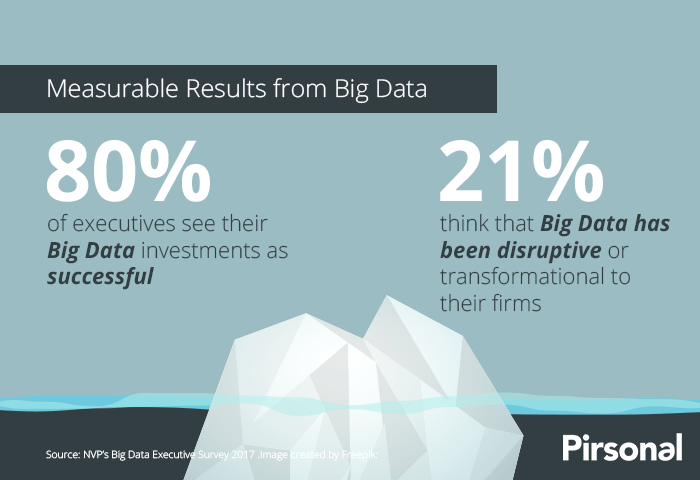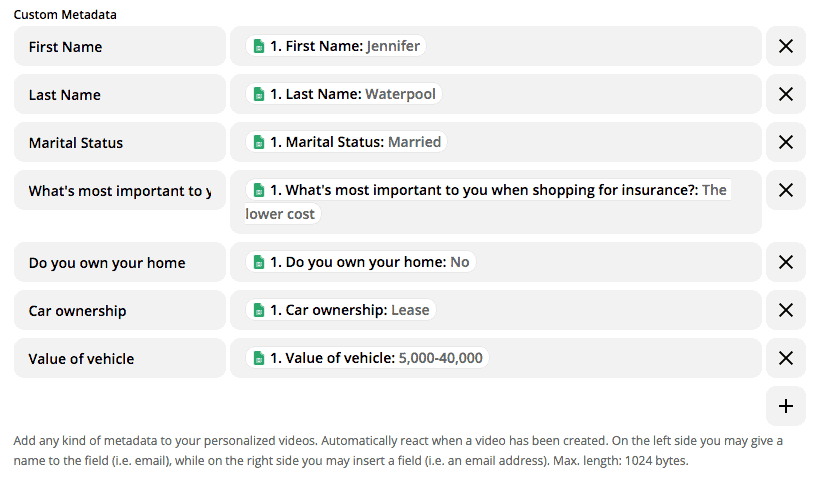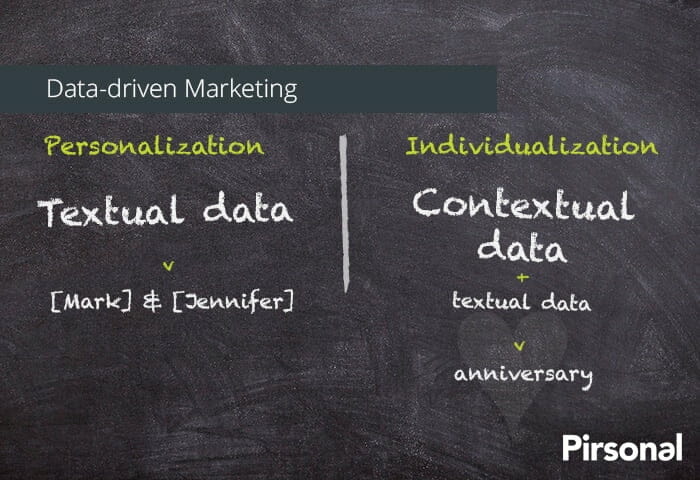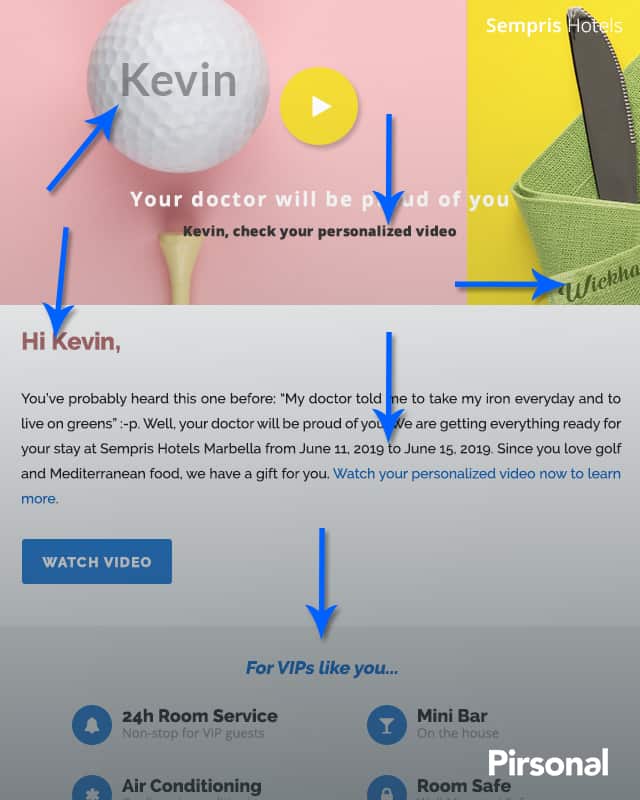Customer data, creativity, and a robust marketing personalization strategy are key points to create personalized marketing messages that make sense and that make people react. In my experience, I often see companies that have more customer or consumer data than what they initially thought and have no clue about how to use this data to create personalized marketing content as part of their different customer journeys. This personalized marketing content is often used to either accelerate a sales process, increase revenue per customer, or to increase customer engagement.
Generally, big firms, multinationals, and consolidated Customer Experience teams (CX) leverage customer data in one or another way for their marketing. But what about the rest of us? Even teams with more experience have the same challenges as small and midsize marketing teams when it comes to creating customized messages but have more tools and third-party help to do more.
From a simple registration form for an event to a complex financial service with multiple variables to consider, nowadays it seems to be easier to retrieve customer data to create personalized emails, personalized images or even personalized videos as part of the customer journey. But it takes more time to figure out how to creatively use this customer data to create messages that are aligned with your customer and with your business goals.
When both things are balanced, you can create more personalized experiences for each of your customers, even automatically. Reaching this doesn’t necessarily require complex tools but looking at the data from a different angle. Based on your ideal process and how this process connects to your data, among other things, you can then choose the right tool for the job.

My goal with this article is to share some ideas that will give you a refreshed approach when using customer data for your next personalized marketing messages, especially with multimedia content.
Customer Data Management Simplified
Keeping track of your customers’ information becomes at this point a matter of life and death to any business. This can often be done by creating, sending and analyzing surveys but especially by changing your organization’s mindset regarding customer data. This is, gathering data not only through tools like surveys and polls, which is helpful but not enough.
Our digital economy requires a proactive effort and approach to data gathering activities using different sources and touchpoints. Once this has been done, making this data available to the competent departments within your organization is the next step. These departments are usually product and customer-facing (Product Development, Customer Experience, Marketing, and Sales).

Customer data management (CDM) is not something new. If you have ever been to a Spanish bar, you will know that the waiters and owners are the masters of collection and handling of information. If you want to buy a house in a little town far away from everything, go to the local bar. Do you want to know how many kids go to the closest school? Ask them as well. “Why hasn’t Ramiro come to the bar today?”. Yes, they know that too.
Although you can use sophisticated customer data tools, the previous paragraph shows that the key is not only in how we store and manage customer information. The key lies especially in how we use that information. This requires a creative approach to customer data.
Before Getting Creative With Your Customer Data…
There are 10 steps I strongly recommend when dealing with personalized marketing campaigns and customer data. Here you can find 3 of them related to customer data:
- First, make sure your campaign goals are crystal-clear. There is no magic in personalizing your marketing. It requires a strategy.
- Now it’s time to study your customer database. If you already have buyer personas, you can use them since this will help you save a lot of time. If you don’t have these buyer personas, it’s time to go to the trenches, which I would recommend anyway. If your marketing and sales team use a CRM, make sure to take a look at their structured variables and even to their notes. Spreadsheets work just fine as well. Talk to your customer success team or whoever is in constant contact with leads and customers within your organization. Product Development teams can also help here. This will help you gather insights that otherwise would take you months to process.
- Once you have done this, select the customer information you can use. Take into consideration any legal restrictions. And remember, select the information that makes sense finding the balance between your customer’s goals and yours. Use this customer data to create segments of clients, basing these segments on any majors customer characteristics.
Remember that this is just a big first step. Later on, when you are already creating customized messages, remember that you can rely on the augmented buyer persona to generate more contextualized and realistic messages.
You can download the full personalized marketing checklist by filling up the form below.
No-code Marketing Personalization: Easy Ways To Use Customer Data For Marketing Automation
Marketing automation allows marketers to nurture individuals with messages at scale, at the right time. With customer data, you can make create messages that are tailored to them.
I’m a marketing automation and personalization expert. But I’m not a developer. An easy way to move data across marketing apps is through Zapier.
Zapier is an integrations platform. This powerful tool allows end-users to integrate the web applications they use in a matter of minutes or even one or two hours in some cases. I love it because you don’t need to be a developer to use it.
In the following video, I show how with Pirsonal’s personalized video app for Zapier you can easily “attach” customer data to each video to boost your automation and customer engagement. With this, you can easily send customer data from Pirsonal to other marketing apps like ActiveCampaign or Hubspot.
This information is saved in our database so that you can use it for other marketing automation processes. This helps you enrich your marketing messages at scale.
Take a look at the following images. It shows you how with our Zapier app to make personalized videos online you can bring data from any data source to Pirsonal, and from Pirsonal to any other app.

Forget About The [Name] Variable
DemandGen reported that Thomson Reuter saw a 175% increase in revenue attributed to the use of buyer personas in marketing and a 72% sales acceleration. BTW, here you have an article where I explain why defining your buyer personas is a vital part of any personalized video strategy.
This is one of the reasons why marketing personalization is more than just a name.

We all have been babies once :-p. Even AI bots :-p.
The first couple of days of a newborn are just fascinating. At first, you don’t know that much about that little creature (a boy for the sake of this example). Well, luckily, you know his name. We all agree that a name is one of the most powerful marketing assets you have.
Right?
The moment we hear it or read it, we all pay more attention to the message. But, is there anything else you know about that little individual?
Back to the little baby boy, if you would have asked me three years ago, I would probably have answered “no”. However, today my perspective is totally different. You know details about his behavior, feeding routines, when he sleeps, when he cries when he has belly issues, and much more. And you thought it was just a name?
The same happens with your leads and customers. You just need to activate your brain’s creative-chip to think outside of the box so that you can analyze all you know about different individuals and marketing segments. From there, think about the best way to structure this knowledge to help you create the best personalized marketing messages you have created to date.
Imagine for a moment that you want to create personalized videos to onboard your VIP clients. The easiest and fastest approach is to think about creating a personalized video where the only customization is a [Name] variable.
It is powerful.
It is catchy.
But, sometimes, it is not enough.
Why? Because the more contextualized the personalization is to each individual, the more it will resonate with his needs, desires, and concerns. Don’t take me wrong, there are times where a name is all you have, for example, if you are talking about a cold prospect or even an inbound lead. But, even then, there are more things you can customize if you think harder. For example, the lead source, the season of the year (Christmas, etc.), the product range, keywords, and much more.
Here is a personalized video example that only personalizes the person’s name:
This customized video it’s catchy, funny, and easy to remember. It works well even if you only customize a name on it because it is still taking into consideration the lead stage in the sales cycle (a person that has shown interest and hasn’t converted yet). Now, let’s see what happens if we take even more things into consideration with this other dynamic video…
You know your message needs to connect with your customer. Since you already know his name, simply forget about it for now.
Let’s see how.
First. take a closer look at the segment. Try to find similarities in the data. If you can structure these similarities in a spreadsheet, then you can use this customer data to create personalized videos. Please note that it doesn’t mean that you need to use a spreadsheet, although you can. You need to be able to structure the information so that you can then use it according to the type of content you want to customize.
If your customer data is related to numbers, think about ways to express those numbers without using them. For example, let’s say you want to communicate the benefits of saving 5%/month more on a pension plan can be for a mid-age man. Number-wise maybe this means retiring with 300,000 USD in the bank. But what else does that mean? Freedom to retire earlier? Traveling? Spending more time with his family? Connect the numbers to concepts that will help your customer better understand and internalize the message.

Translate The Customer Data Into Something Of Value For Your Customer
Marketing personalization is about leveraging your customer data to connect with people through custom messages. Nowadays, talking about marketing personalization also involves technology and “translated” data. “Translated data” means information that is not just textual but especially contextual, converted into something your segmented audiences will understand.
Let me use an old example.
Imagine Kevin and his wife Karoline. They just made a reservation in a fancy hotel, where they’ve already been a couple of times. So the hotel already knows a few things about them. They know Kevin likes to play golf and Karoline loves eating gourmet food. Let’s say he made the reservation and the hotel wants to increase the revenue per reservation. Also, they want to boost the guests’ experience.. What if we connect him with one of his biggest passions, Golf, but also help him to give his wife something special to share during their stay at the hotel?

In the video below I explain all this.
The hotel can segment the database, and even hyper-segment it, to create completely individualized messages based on all the variables at their disposal, in real-time, and to automatically send the emails through a marketing automation tool. One-to-one marketing occurs in a context in which one of the main challenges organizations like yours and mine have is to fight for attention, loyalty, and engagement. Using your customer’s own context will help you get his attention.
In the example above you can see things like humor, dates, the user knows we are talking about a couple, and so on. All this is information that has been translated from the main data available about these two individuals. This can also be applied to personalized calls to action.
What matters is using customer data not just because you have it but because it can add value to your customer and to his particular context. Context is what sets your marketing messages apart from your competitors’ messages and what keeps your customers intrigued by what’s next while they buy from you.
